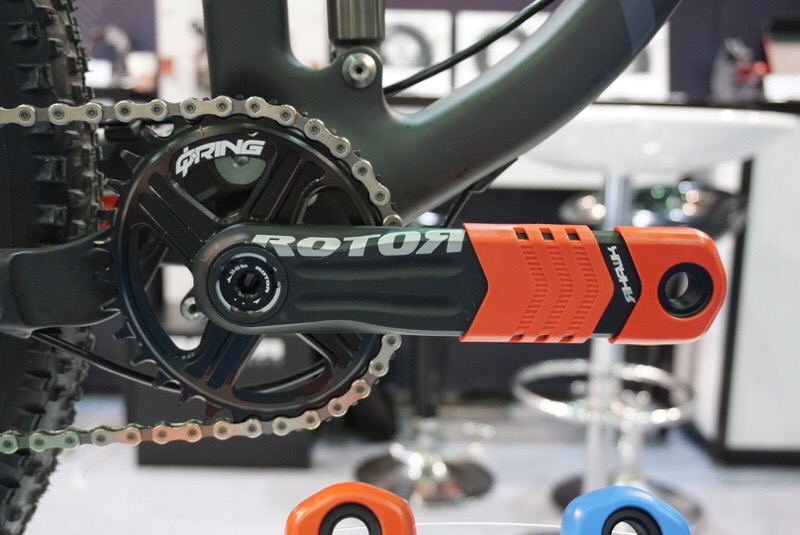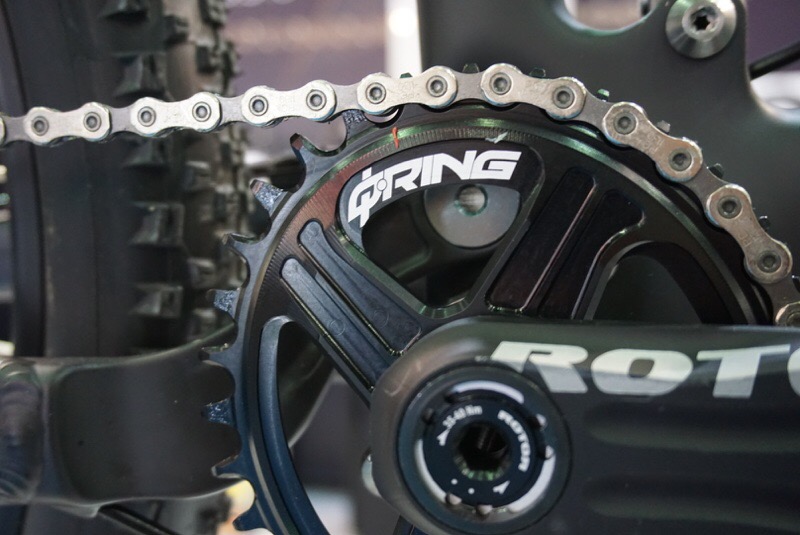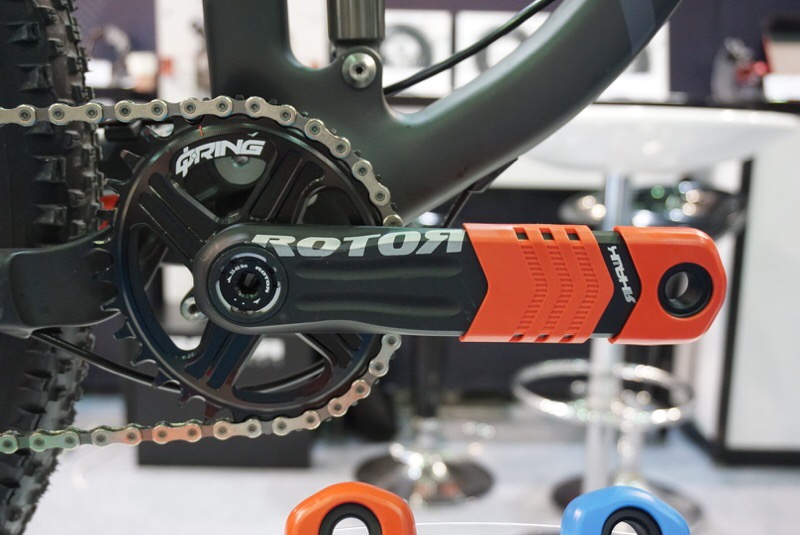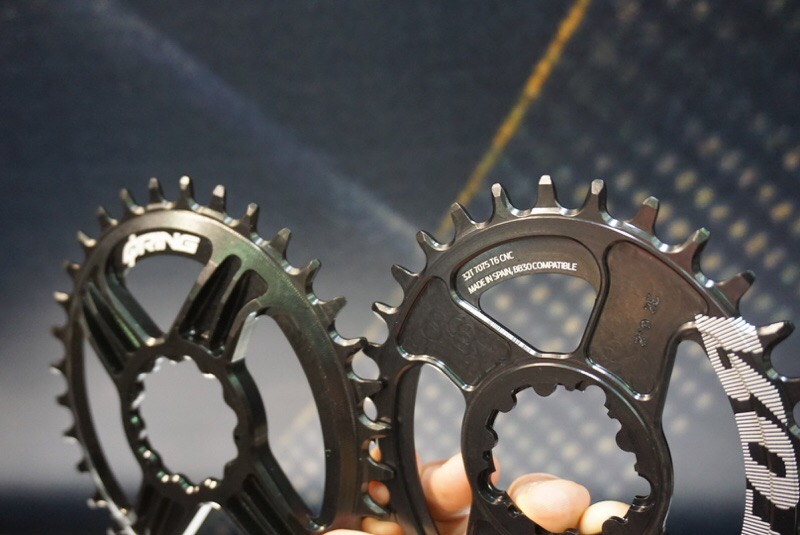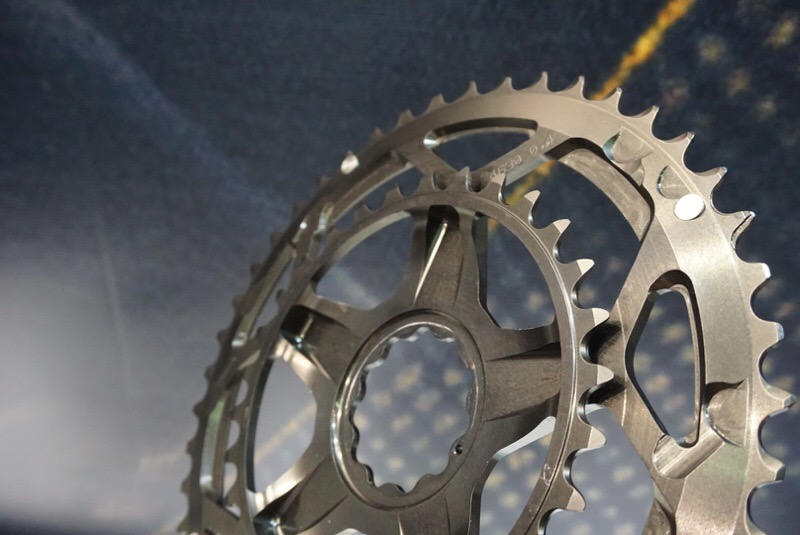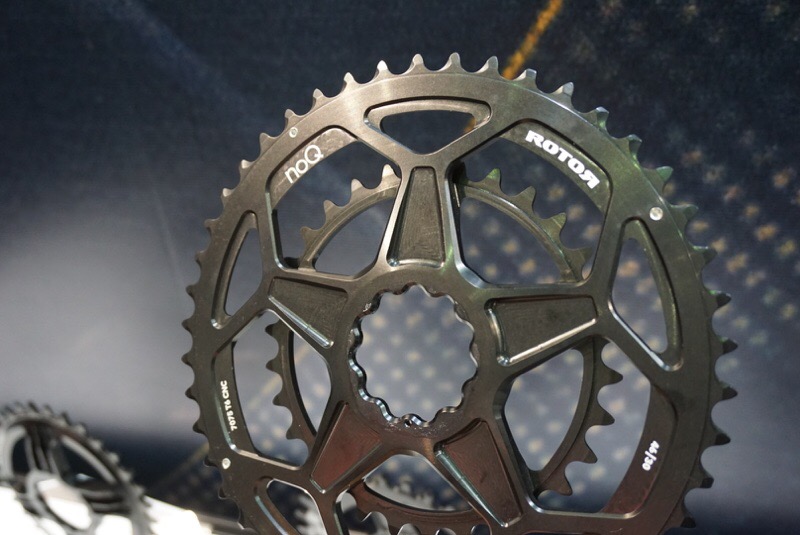You might say it’s about time, and we’d agree, but Rotor has finally upgraded their mountain bike chainrings to a direct mount design. The one-piece option will be available for their new Hawk mountain bike cranks that debuted at Eurobike 2016 (shown above), their legacy Rex cranks, plus SRAM and Race Face. Actually, they showed a first generation of these things along with the new cranks, but they’ve made a few noteworthy updates.
They say it saves about 40g over a standard four-bolt chainring and spider. Chainring size options now include 26/28/30/32/34 tooth counts, and with Hawk versions, they even found a way to mimic the positioning adjustability of their four-bolt rings…
Pricing is $79.99 Q-ring, $69.99 for NoQ round rings.
By switching to smaller teeth for the mounting splines on the Hawk’s spindle, they were able to indicate five different positions, which mimics the adjustability of their original rings. Others are fixed in position at “3”, which they say suits most riders best, but if you’ve dialed your clocking in with other Rotor rings, it’s nice to have the option here, too.
Above on left is the chainring for the Rex cranks, which have been their standard MTB crank arm for years. On the right is the SRAM-compatible chainring.
The Hawk (and base level Raptor) cranks are a modular system that allows you to use any crank arm, chainring and spindle mixed or matched to fit your bike, and let it swap among standard, Boost, fat bike, BSA and BB30 with no problem. Check out more tech details on these cranks in this post.
We saw this one-piece “spider-ring” style double chainring at Interbike.
Not shown but coming soon is a new smartphone app for their TwinPower cranks to show your power output on the phone via Bluetooth. iNpower only has ANT+, so that one’s limited to displaying on desktop for full pedal stroke analysis (regular power data will show up on any regular ANT+ cycling computer.
